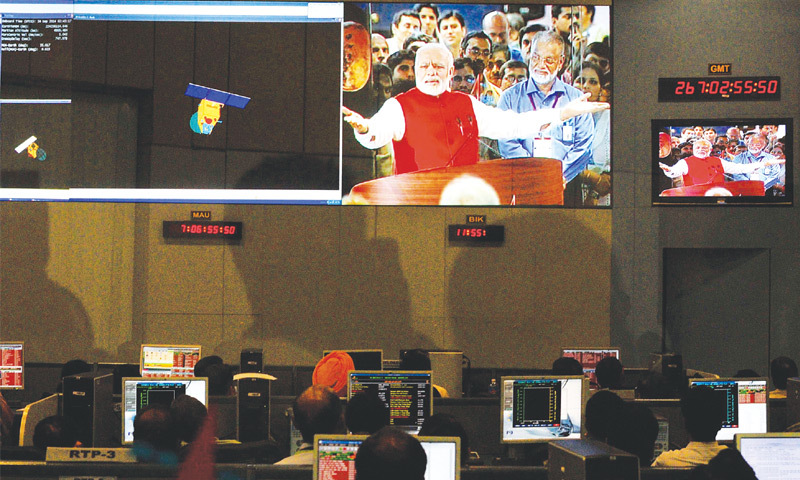BANGALORE: India won Asia’s race to Mars on Wednesday when its unmanned Mangalyaan spacecraft successfully entered the planet’s orbit after a 10-month journey on a tiny budget.
Scientists at mission control let out wild cheers and applause after the gold-coloured craft fired its main engine and slipped into the Red Planet’s orbit following a 660-million kilometre voyage.
“History has been made. We have dared to reach out into the unknown and have achieved the near impossible,” a jubilant Prime Minister Narendra Modi said at the Indian Space Research Organisation’s (ISRO) base near Bangalore.
Country spends just $74 million and joins an elite club of nations
“The success of our space programme is a shining symbol of what we are capable of as a nation,” Mr Modi said, grinning broadly and embracing the ISRO’s chairman.
The success of the mission, which is designed to search for evidence of life on the Red Planet, is a huge source of national pride for India as it competes with its Asian rivals for success in space.
Indians from ministers to students and office workers took to Twitter to express pride, with the Hindi slogan “JaiHind” or “Hail India” trending on the microblogging site.
India has been trying to keep up with neighbouring giant China, which has poured billions of dollars into its programme and plans to build a manned space station by the end of the decade.
At just $74 million, the mission cost is less than the estimated $100 million budget of the sci-fi blockbuster “Gravity”.
It also represents just a fraction of the cost of Nasa’s $671 million MAVEN spacecraft, which successfully began orbiting the fourth planet from the sun on Sunday.
India now joins an elite club of the United States, Russia and Europe who can boast of reaching Mars. More than half of all missions to the planet have ended in failure, including China’s in 2011 and Japan’s in 2003.
No single nation had previously succeeded at its first go, although the European Space Agency, which represents a consortium of countries, pulled off the feat at its first attempt.
Scientists announced at 8:02am that Mangalyaan had entered the orbit. The probe is expected to study the planet’s surface and scan its atmosphere for methane, which could provide evidence of some sort of life form.
Published in Dawn, September 25th, 2014














































